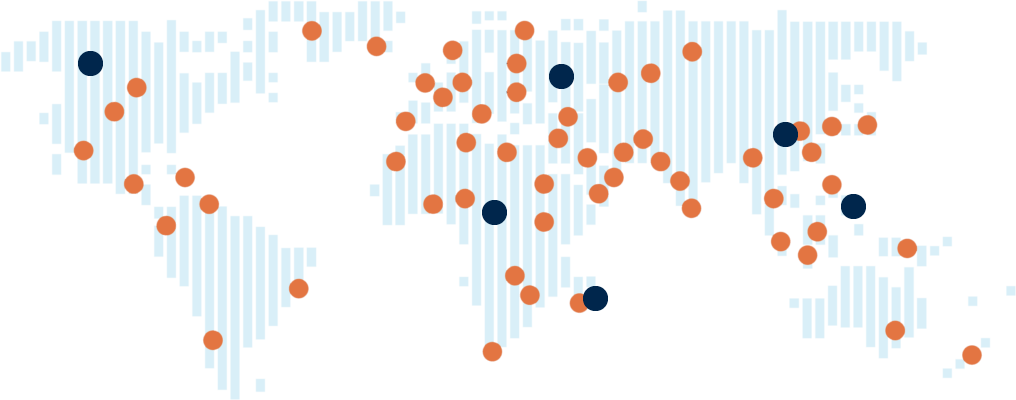Guy Foster, Chief Strategist, discusses UK economic growth data while Janet Mui, Head of Market Analysis, examines US and UK inflation data.
Last week was a strong one for the equity market, but for those focused purely on the macroeconomic factors it contained some reasons for anxiety. Yet again, a crucial data point – US inflation – did not quite fit the narrative contained in most forecasters’ 2024 previews. The improving outlook for investments hinges upon a fortuitous cocktail of resilient economic activity and receding inflation. Were one of those ingredients to go missing, the outlook could turn sour.
US inflation: threatening to spoil the party
This hypothesis would loom large in the mind of macro investors as the US reported inflation data for the month of January, which was stronger than expected. In immediate response to these data, interest rate cut expectations were pared, bonds sold off (their yields rose), and stocks fell quite markedly.
Of the last six inflation prints, this is the fifth that has been surprisingly strong, and the size of the surprise was the greatest. In late January, an extraordinary six interest rate cuts were expected, starting in March. On Friday, that had been pared back to less than four.
It seemed surprising that such sharp cuts would be expected, as survey data seems to imply that the economy is holding up very well. Jobs growth data has consistently impressed. And with inflation falling and the oil price well behaved, the high wage growth of recent years should be expected to support consumption (the largest component of economic growth).
Should these data worry policymakers?
As ever there were pros and cons. Durable goods prices generally fell, despite increasing spending on the category. Underlying food commodity prices fell, while food inflation reported within the Bureau of Labor Statistics consumer price index (CPI) rose. But the concern will be around the services category. Several different measures that attempt to strip out anomalies, median CPI1, trimmed mean CPI2, and core sticky CPI3, all told the same story. Inflation was stronger at the beginning of 2024 than at the end of 2023.
How concerned should we be about this?
Lower interest rates would be a tailwind for valuations, but they often come as a response to economic weakness, which is a headwind for earnings. What we have seen at the beginning of 2024 is the opposite: the risk of higher interest rates weighing on valuations, but the earnings outlook remaining bright.
Semiconductors: a cyclical play on a secular theme
The theme of artificial intelligence has continued to particularly resonate with investors. The eventual adopters of artificial intelligence (AI) will be drawn from many industries. For those in highly competitive fragmented industries, any efficiency gains will inevitably have to be passed on to consumers in the form of lower prices. For those companies, AI represents a risk, if not implemented effectively, rather than a boon. For those in fragmented uncompetitive markets, AI could drive profit growth.
But as is often the case with investment themes, the so called “picks and shovels” are the better means of participation. This expression harks back to the gold rush, when many were left destitute after investing everything in an often-fruitless search for gold, while those who sold picks and shovels to the prospectors were assured of a much lower risk profit.
Several companies catching the markets attention in recent weeks have included ARM and NVIDIA, which are involved in chip design.
Gains in NVIDIA meant the stock eclipsed Amazon and Alphabet in market cap, causing scepticism and fuelling bubble fears, but, unlike previous periods of stock market excess, gains in NVIDIA appear consistent with the improving demand outlook.
ARM, on the other hand, is an unusual situation as only a small amount of the company was listed last year (the rest is owned by Softbank), meaning that good news can be amplified by illiquidity and the unwinding of regrettable short positions held by some investors. Short sellers have sold stock they don’t own in anticipation of buying it back at a lower price in the future, but they will be compelled to buy it back at a higher price if they are wrong in their analysis. Consequently, that valuation has uncoupled from the company’s fundamentals.
The providers of manufacturing equipment, such as ASML or Applied Materials, are seeing an increase in demand. But other parts of the semiconductor value chain, not limited to artificial intelligence, are at an earlier stage in their recovery, particularly amongst integrated device manufacturers. This means that even after what seem to be eyewatering gains in some parts of the value chain, there are others just beginning their journey. These companies can offer attractive entry points into this generational secular change in an industry emerging from a cyclical downturn.
The performance of AI-related stocks was symptomatic of an investment environment which managed to overcome the headwind posed by few rate cuts. It seems likely that small movements in interest rates would not factor into investors’ valuation models, whereas rising wages and employment implies more money is entering the market through pensions savings.
The US remains the most important economy in the world but despite that, another factor reducing anxiety over the inflation print must be the variation in different countries’ inflationary experience. In January, some economies saw accelerating inflation while some saw decelerating prices, and that lack of consistency is in stark contrast to 2022 when price rises were everywhere.
The UK: emerging from a recession which may never have happened
The UK saw slowing inflation in January. The main impact, like in the US, was lower durable goods prices after January sales, which were sharper than last year. The outlook for UK inflation is a benign one, with headline CPI potentially dropping below 2% as early as March. Be warned, however, that this drop will be somewhat anomalous, and the median CPI suggests that inflation having come down from its peak will only slowly trend towards the Bank of England’s target on a sustainable basis.
Seemingly aligned with the UK’s weaker inflation data was a downbeat measurement of UK gross domestic product (GDP) for the final quarter of 2023. The headline-writers’ joy was palpable as the UK is adjudged to have slipped into a recession in the second half of last year. The headline is a little misleading though.
While the UK economy laboured during 2023, its contraction has been marginal and recent history suggests it has every chance of being revised away, much as the second recession of the so-called double dip recession of 2011/2012 was erased from history by statistical revisions.
Ignoring the economists, recession would normally be characterised by declining employment (data last week suggested it unexpectedly expanded, again, subject to revision) and consumption. Retail sales numbers released on Friday suggest that declining inflation is drawing consumers back to the shops, already such that if the recession is not revised away from last quarter, the economy will already have emerged from it this quarter.



